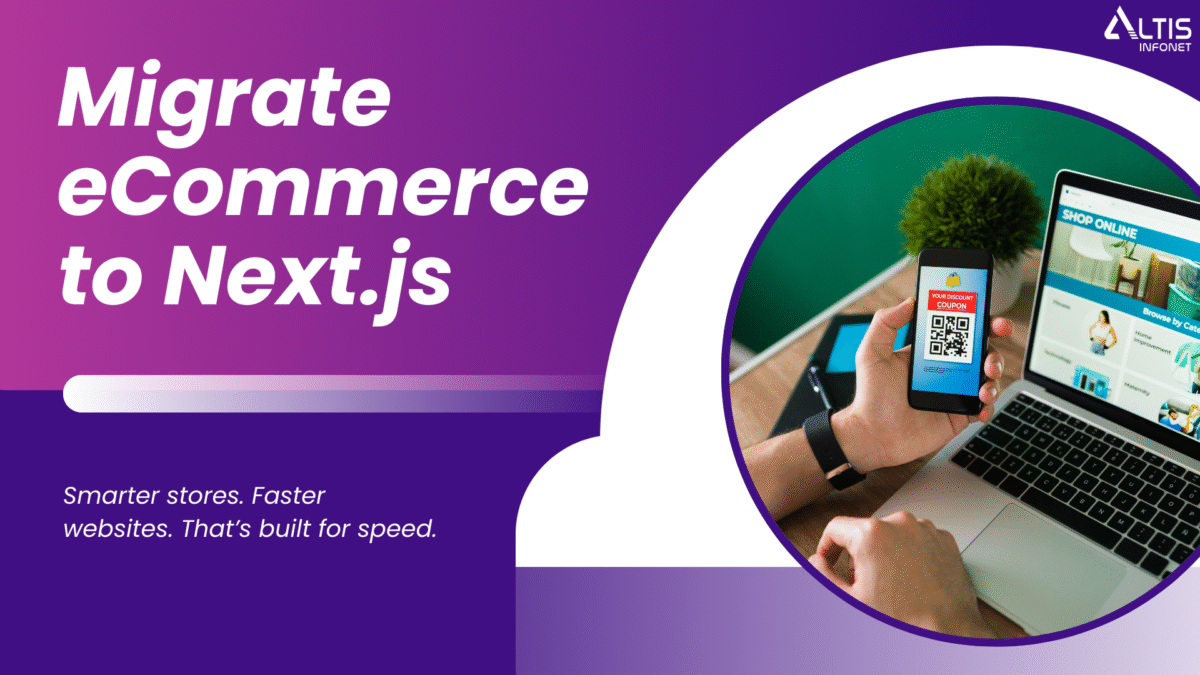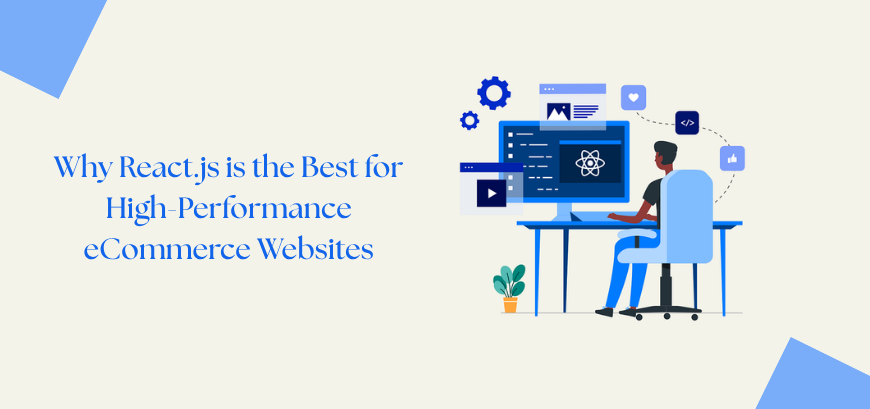In today’s digital economy, a slow or outdated eCommerce website can cost you customers and revenue. Online shoppers expect instant results, smooth navigation, and secure transactions. If your site takes more than a few seconds to load, visitors may leave before completing their purchase. For businesses aiming to grow, scalability is equally important. As your traffic increases, your platform should be able to handle the demand without slowing down or crashing.
This is where Next.js comes in. Known for its speed, flexibility, and modern development features, Next.js is rapidly becoming the go-to framework for building high-performance online stores. Migrating your eCommerce website to Next.js is not just a technical upgrade—it’s a strategic move that can significantly improve user experience, boost SEO rankings, and future-proof your business.
Why Choose Next.js for eCommerce Migration?
Next.js combines the best of both static and dynamic website performance. Unlike traditional platforms that rely heavily on client-side rendering, Next.js offers server-side rendering (SSR) and static site generation (SSG). This means that pages can be pre-rendered and served almost instantly, giving your customers faster access to product pages, checkout processes, and search results.
From an SEO perspective, these rendering methods make your website more crawlable by search engines, leading to better visibility on Google. For an eCommerce site, this translates to improved rankings for product pages and category listings—helping you attract more organic traffic.
Another reason businesses prefer Next.js is its hybrid rendering capability. You can render certain pages statically for speed, while keeping others dynamic to support real-time updates such as stock availability, cart functionality, and personalized recommendations. This makes Next.js a perfect fit for the unique demands of eCommerce platforms.
Preparing for a Smooth Migration
Before starting the migration, it is important to plan your strategy carefully. Every eCommerce site is different, and migrating without a roadmap can lead to disruptions in sales and customer experience. Begin by auditing your current website. List all key features, including product pages, checkout flow, customer accounts, shipping integrations, and payment gateways.
Next, identify areas where performance issues occur. Do product pages take too long to load? Is the checkout process slow? Are you losing mobile traffic due to poor responsiveness? Understanding these pain points helps ensure that your migration to Next.js solves the right problems.
Businesses often adopt a phased migration strategy, where they start by moving essential parts of the site—like product listings and checkout—to Next.js, while keeping other sections on the old platform temporarily. This approach minimizes downtime and allows you to test performance improvements gradually.
Data Migration: The Backbone of the Process
For any eCommerce platform, data is the heart of the business. Migrating product catalogs, customer profiles, and order history must be done with precision and care. Losing or corrupting data during migration can cause major setbacks.
Next.js integrates seamlessly with headless CMS platforms like Strapi, Contentful, or Sanity, as well as eCommerce backends like Shopify, BigCommerce, or WooCommerce via APIs. This headless architecture ensures that your front-end (what customers see) and your back-end (where data is managed) work independently, giving you more flexibility and scalability.
By decoupling the front-end and back-end, businesses can provide a consistent experience across multiple platforms—whether it’s a website, mobile app, or even a marketplace integration.
Overcoming Common Challenges in Next.js Migration
Migrating an eCommerce website is not without challenges. One of the biggest hurdles is ensuring that there is no downtime during the transition. Since eCommerce platforms handle transactions around the clock, even an hour of downtime can mean lost revenue. Careful staging, testing, and phased rollouts are crucial to avoid this risk.
Another challenge is retraining development teams. If your developers are used to traditional CMS platforms, they may need time to adapt to the React and Next.js ecosystem. Investing in training or working with experienced Next.js developers can make the process smoother.
Finally, integrations such as payment gateways, shipping providers, and third-party apps must be tested thoroughly. A seamless checkout experience is the backbone of any online store, and even a minor error can disrupt sales.
Testing for Performance and SEO Success
After migrating to Next.js, testing is the most important step. Your new site should be faster, more responsive, and more scalable than the old one. Tools like Google Lighthouse and GTmetrix can help measure performance and identify areas for improvement.
In addition, focus on Core Web Vitals—Google’s key metrics for user experience. These include loading speed, interactivity, and visual stability. Next.js makes it easier to score high on these benchmarks, directly improving your search rankings.
On the SEO side, ensure that meta tags, structured data, and canonical URLs are correctly implemented after migration. A strong SEO foundation combined with Next.js performance ensures your site attracts and converts more visitors.
Long-Term Benefits of Migrating to Next.js
Migrating to Next.js is more than a short-term fix—it’s a long-term strategy for growth. A faster website not only improves user experience but also boosts conversion rates, as customers are more likely to complete purchases on a responsive site. Scalability ensures that as your traffic grows during peak seasons like holidays or sales events, your website continues to perform without slowing down or crashing.
Moreover, Next.js future-proofs your business. The framework is continuously updated by Vercel and supported by a large developer community. This means your eCommerce site will always have access to the latest performance optimizations, security updates, and modern features.
Conclusion
Migrating your eCommerce website to Next.js may feel like a big undertaking, but the rewards are well worth the effort. By offering faster load times, better scalability, and stronger SEO performance, Next.js provides everything you need to deliver a world-class shopping experience.
With careful planning, secure data migration, and rigorous testing, your business can enjoy a smoother, more powerful online platform. In an industry where every second counts, embracing Next.js migration is not just about upgrading technology—it’s about staying competitive, increasing revenue, and building a future-ready eCommerce brand.
Your online store deserves more than just a facelift—it deserves the speed, scalability, and performance that only Next.js can deliver. At Altis Infonet, we specialize in seamless eCommerce migrations that ensure zero downtime, smooth functionality, and measurable growth from day one.
Whether you’re struggling with slow load times, scalability issues, or outdated technology, our team will help you unlock the true potential of your online business. With a proven track record in Next.js development and eCommerce optimization, we’re here to future-proof your website and give your customers the fast, frictionless experience they expect.
Don’t let performance hold your business back. Contact Altis Infonet today and take the first step toward building a lightning-fast, scalable, and SEO-friendly eCommerce platform with Next.js.





